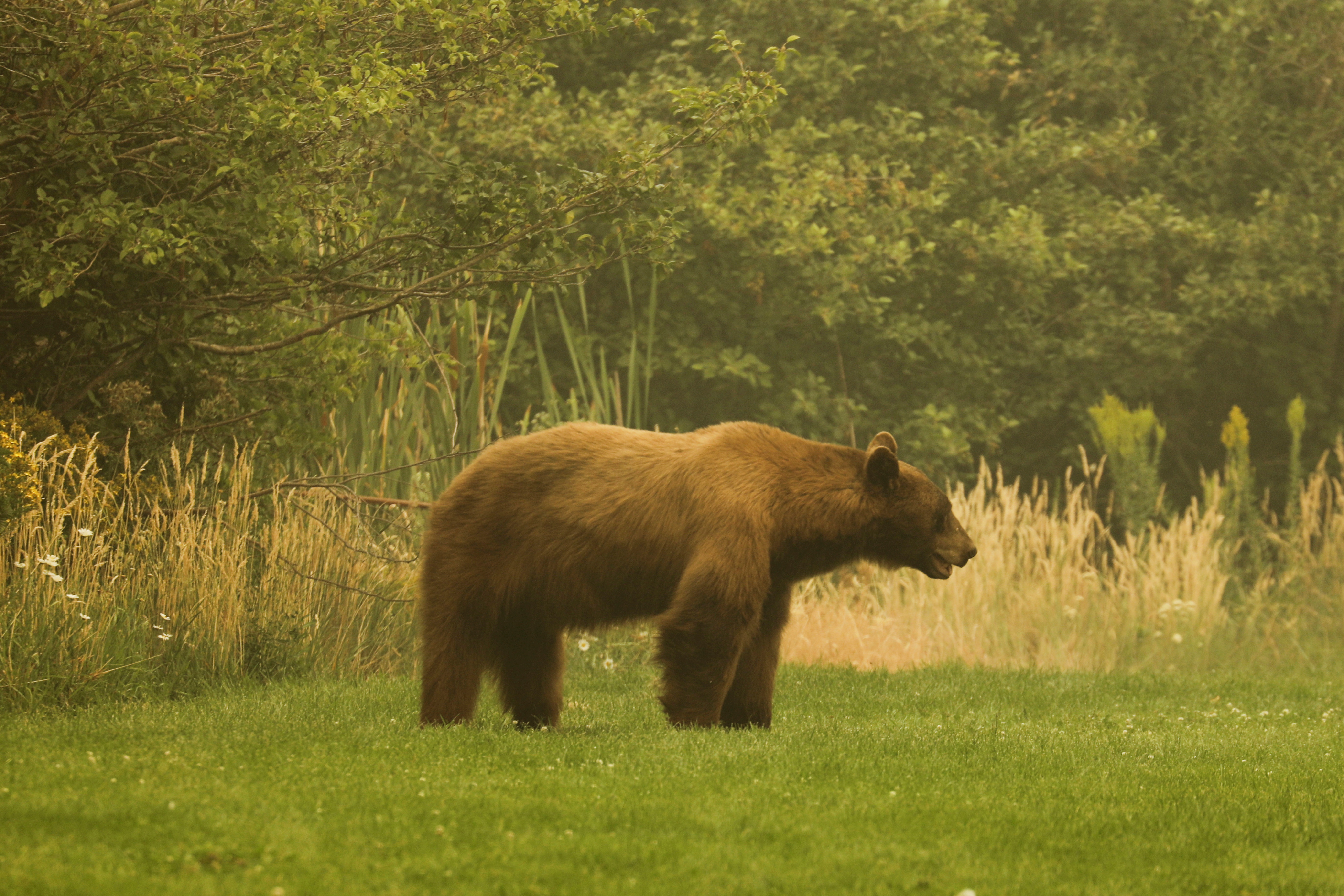Why American Black Bears Are Now Tan, According To A Study

Some black bears in the western United States have evolved tan fur. The new hue is likely due to a genetic variant similar to the one that causes albinism in humans, according to a new study published in the journal Current Biology.
Researchers from the United States and Japan analyzed DNA samples from 151 American black bears (Ursus americanus) from the United States and Canada, and found that those living in western states such as Nevada, Arizona, and Idaho were more likely to display reddish fur than those living in western states such as Nevada, Arizona, and Idaho. black that gives these medium-sized bears their name.
The researchers identified a mutation known as R153C in a gene called tyrosinase-related protein 1 (TYRP1), which causes a change in the pigmentation of the coat, making the coat the same color as a copper penny.
"TYRP1 is a known pigmentation gene in the precursor molecule pathway that ultimately produces eumelanin (black or brown pigment) or pheomelanin (red or yellow pigment)," Emily Puckett, lead author of the study, told Live Science. and Assistant Professor of Biological Sciences at the University of Memphis, in Tennessee. "What it does is it changes the amino acid sequence of that gene," she added.
This "cinnamon variant," which Puckett calls a "young mutation," emerged about 9,360 years ago, according to the study, and has gradually spread through the population.
Black bears from other areas of the United States, such as those along the Great Lakes and in the Northeast, are less likely to show red-tinged fur because this young mutation "has not had sufficient time for natural migration." , according to Puckett. “Without a doubt, geography plays a role,” she added. “Our demographic modeling identified that the most likely place where the mutation arose was somewhere in the Western region, most likely in the Southwest. From there, it spread through gene flow throughout all populations,” he stated.
But even that is a slow process, as most East Coast black bears still sport jet-black fur. "Bears do not go through the Great Plains," said the expert. “If they wanted to go east, they would have to go north into Canada, across the Canadian prairies, around the Great Lakes, and then down again to the eastern towns. That would take a long time. We see that it is occurring and that it is moving east, but it is a process that takes time,” she added.
The researchers also examined whether the development of this gene in black bears in the western United States had anything to do with thermoregulation, a mechanism that helps mammals regulate their body temperatures, or with competition with another bear species. tan: brown bears (Ursus arctos), also known as grizzly bears.
"Our modeling suggests that yes, the gene is adaptive in some way, but we're not 100% sure what it adapts to," Puckett said. He added: “We did tests for both thermoregulation and competition with brown bears, and neither was strongly supported. Our new hypothesis is that it is a mechanism of selective advantage”.
Interestingly, the variant is similar to one in humans known as oculocutaneous albinism type 3 (OCA3) that causes lighter-colored hair and skin, two hallmarks of albinism. In some cases, it can also cause vision problems. "What is fascinating is that the bears do not show signs of visual problems, since it would be difficult for them to survive," he concluded.
Keep reading:
Researchers from the United States and Japan analyzed DNA samples from 151 American black bears (Ursus americanus) from the United States and Canada, and found that those living in western states such as Nevada, Arizona, and Idaho were more likely to display reddish fur than those living in western states such as Nevada, Arizona, and Idaho.
Post a Comment for "Why American Black Bears Are Now Tan, According To A Study"